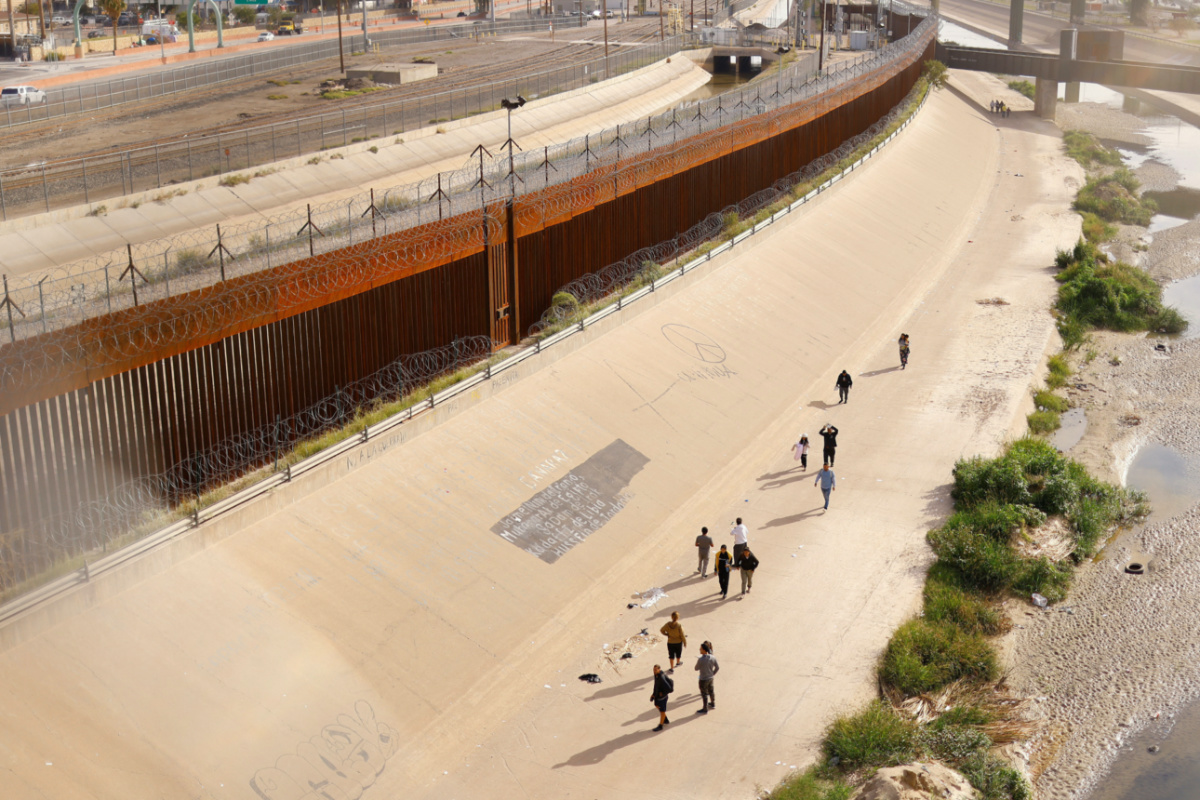
EMILY MCFARLAN MILLER, of Religion News Service, speaks to representatives of US refugee resettlement agencies about what the US President Joe Biden’s deal focused on Venezuelan migrants means in the wider context…
United States
RNS
Responding to a tide of Venezuelans crossing the United States-Mexican border in recent months, the Biden administration announced that it would send most Venezuelans who enter the country illegally back to Mexico, while allowing 24,000 Venezuelans to remain in the US on humanitarian parole.
More than six million Venezuelans have fled their country and President Nicolas Maduro’s brutal regime, according to Human Rights Watch, flooding nearby Latin American countries and overwhelming an already stressed system of receiving and processing migrants at the US border. In August and September alone, nearly 60,000 Venezuelans made contact with border authorities, the Department of Homeland Security said, many of them seeking asylum.

Asylum-seeking migrants walk near the border wall after crossing the Rio Bravo river to turn themselves in to US Border Patrol agents to request asylum in El Paso, Texas, US, as seen from Ciudad Juarez, Mexico, on 13th October. PICTURE: Reuters/Jose Luis Gonzalez
In coordination with the Mexican Government, the US will bar entry to Venezuelans, who so far haven’t been subject to Title 42, a measure that refuses entry on public health grounds.

“It provides only temporary protection to a very limited subset of the millions of Venezuelans forced to leave their homeland.”
– Krish O’Mara Vignarajah, president and CEO of Lutheran Immigration and Refugee Service
The 24,000 will be admitted under a humanitarian parole program modeled on the one that has accommodated Ukrainians and Afghans fleeing the wars in their countries. To be eligible for the program, Venezuelans must have the support of a legal US resident or entity who can provide for the refugee financially, the administration said. They will be allowed to work and have the opportunity to become citizens after some years.
With the new DHS process for Venezuelans, US refugee resettlement agencies, most of them faith-based organisations, will be pressed to recover more quickly from the loss of funding and manpower over the last few years, when relatively low numbers of refugees have entered the country, and to advocate for those still displaced by earlier international crises.
While applauding the new avenue for Venezuelans, Krish O’Mara Vignarajah, president and CEO of Lutheran Immigration and Refugee Service, cautioned that the new program “should not be viewed as a replacement for asylum protections enshrined in both US and international law.”
“It provides only temporary protection to a very limited subset of the millions of Venezuelans forced to leave their homeland,” Vignarajah said in a written statement.
So what are those asylum protections, and how does the US refugee resettlement program work — and how do faith-based organisations play a role? Let us explain.
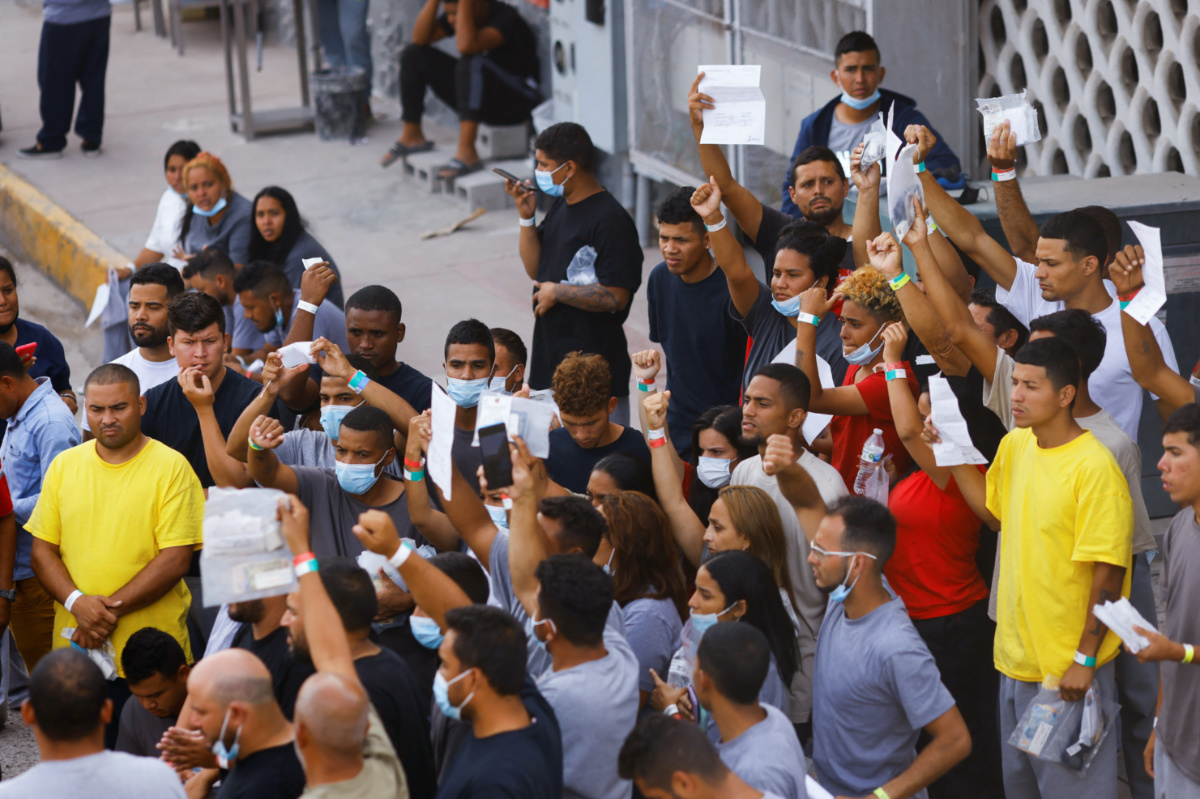
Migrants from Venezuela who got expelled from the US and sent back to Mexico under Title 42, stand outside the National Institute of Migration building in Ciudad Juarez, Mexico, on 13th October. PICTURE: Reuters/Jose Luis Gonzalez
Who are refugees?
The United Nations, in its 1951 Refugee Convention and 1967 Protocol, defines a refugee as “someone who is unable or unwilling to return to their country of origin owing to a well-founded fear of being persecuted for reasons of race, religion, nationality, membership of a particular social group, or political opinion.”
Congress adopted this definition in the Refugee Act of 1980, which also created the current process for refugee resettlement in the US, a public-private partnership between the US government and nine refugee resettlement agencies.
In fiscal year 2022, most refugees (7,810) came to the US from Congo, followed by Syria (4,556) and Myanmar (2,156), according to State Department data.
And, Vignarajah told Religion News Service, “The United States has a strong legacy of welcoming persecuted people of diverse faith traditions.”
More than half of all refugees (64 per cent) admitted in fiscal year 2021 were Christian, she pointed out. State Department data shows more than 232,000 Christians have been resettled in the US since fiscal year 2012, followed by 174,000 Muslims.
How does the US refugee resettlement program work?
Every October, with the start of the federal government’s fiscal year, the president, in consultation with Congress, sets the number of refugees who will be allowed into the country that year. This figure is known as the presidential determination.
President Joe Biden recently announced the US will admit up to 125,000 refugees over the next year – the same number as last year.
“Up to” is a critical part of the determination. Primarily because of the pandemic and cuts made to the refugee resettlement program under the Trump administration, the US only admitted a fraction of that number last fiscal year: 25,465.
But there are other ways people meeting the definition of a refugee can enter the US. And if you add the number of Afghans and Ukrainians admitted on humanitarian parole to the number of refugees admitted to the US in fiscal year 2022, the Biden administration did resettle roughly 125,000 people – it just didn’t resettle them all as refugees, according to Matthew Soerens, national coordinator of the Evangelical Immigration Table, and US director of church mobilisation and advocacy for World Relief.
The presidential determination has been as high as 231,700 in 1980, the year the US refugee resettlement program started, and as low as 15,000 in President Donald Trump’s last year in office.
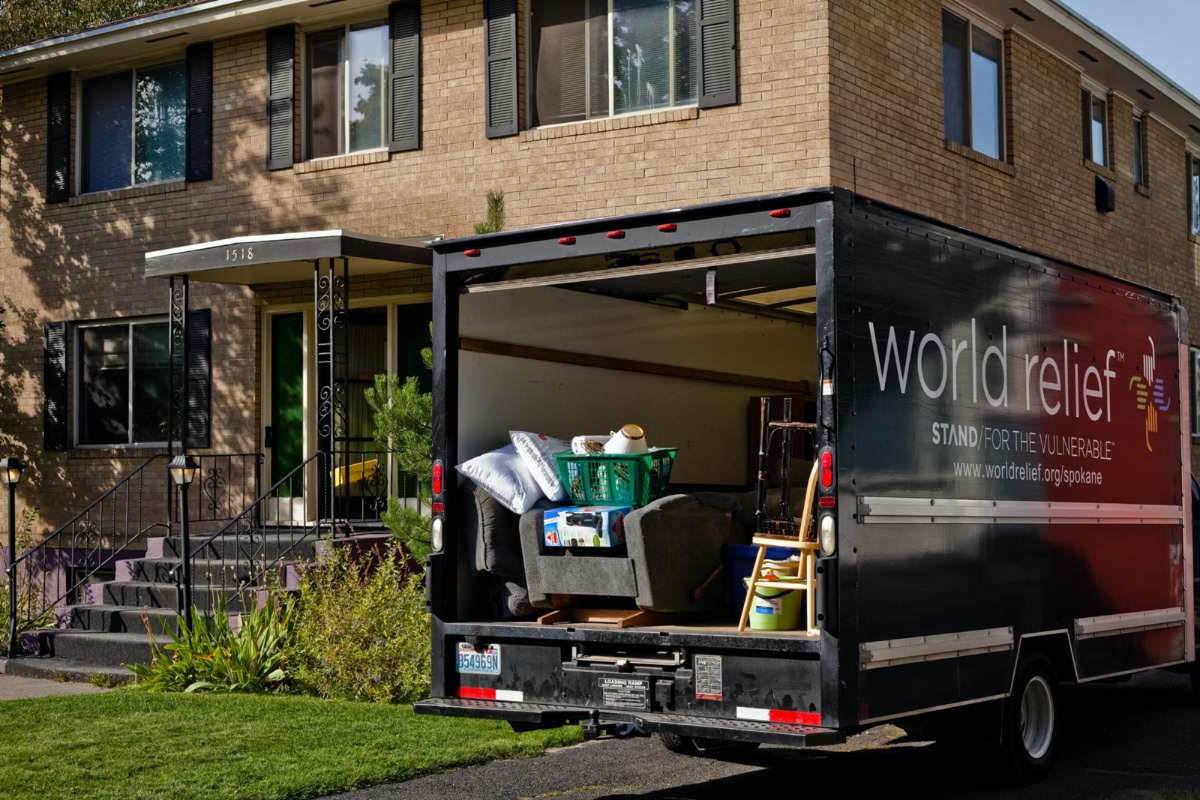
A World Relief moving truck with furnishings for a refugee resettlement home in Spokane, Washington. PICTURE: Viktoriya Aleksandrov/World Relief Spokane
Refugees admitted to the US have been identified and vetted by the US Government overseas, usually in a second country after they already have fled their country of origin, according to Soerens.
Some have been living in refugee camps. Others, like most Syrians who have fled to Jordan, are living in urban environments, Soerens said. Most are never resettled to a third country, but rather return to their home country when it is safe to do so or receive permanent legal status in their second country.
If they are resettled, most of the time they don’t get to choose their new country, Soerens said.
On average, the UN has reported, it takes 17 years for a refugee to return home, receive permanent legal status in a new country or be resettled elsewhere. Some families spend generations in refugee camps.
We rely on our readers to fund Sight's work - become a financial supporter today!
For more information, head to our Subscriber's page.
Before entering the US, all must pass health and security screenings. That vetting only gets more intense with every passing year, according to Mark Hetfield, president and CEO of HIAS (formerly the Hebrew Immigrant Aid Society).
“Nobody gets resettled here without going through this bureaucratic obstacle course of extreme vetting,” Hetfield said.
Once refugees are in the US, resettlement agencies help them find housing and employment, learn to speak English if they don’t already and otherwise settle into their new home.
How have organisations rebooted their programs after Trump cuts?
The Trump administration hadn’t been processing as many people overseas and had slashed the presidential determination to new lows each year of Trump’s presidency, forcing resettlement agencies to close offices and lay off staff.
Hetfield of HIAS said all nine resettlement agencies have reopened offices across the country, and the government is processing refugees more quickly.
But, he said, “It takes time to build it back.
“It’s easy to destroy something. It’s a lot harder to build it, let alone to rebuild it when you’ve had the confidence shattered the way that it was for the last four years.”
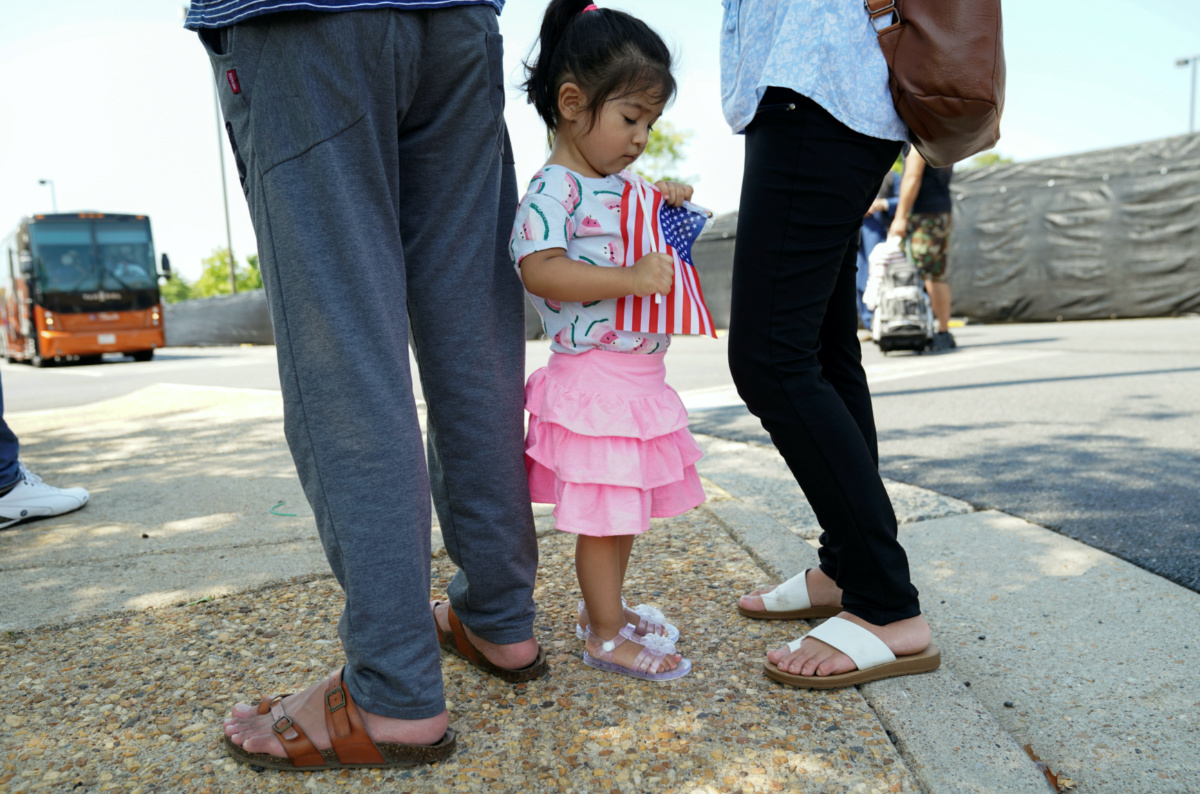
A girl holding a US flag waits with her parents for Afghan relatives at a processing center for refugees evacuated from Afghanistan at the Dulles Expo Center near Dulles International Airport in Chantilly, Virginia, US, on 24th August, 2021. PICTURE: Reuters/Kevin Lamarque/File photo.
What about asylum-seekers?
Many of the Venezuelans entering the US at its border with Mexico are seeking asylum, citing the Maduro regime’s attacks on its own people.
Asylum-seekers must meet the same criteria for a refugee: a well-founded fear of persecution in their home countries because of their race, religion, nationality, membership in a particular social group or political opinions. In late September, Biden announced changes meant to streamline the asylum granting process.
The UN convention and protocol, as well as the Refugee Act of 1980, hold that people should not be returned to a country where they’re likely to face persecution – a consequence of the 1930s and ’40s, when the US turned away Jewish people fleeing the Nazis.
“We and most other countries around the world realised that that was a terrible, grave, moral error, and we should never have done that,” said Soerens of World Relief.
Asylum-seekers must already be in the US or at its border to claim asylum, he said. They do not count toward the number of refugees admitted to the country each year and cannot access many of the same services as people who come to the US through the refugee resettlement system. Among other things, they are not authorized to work in the US.
PREVIOUSLY: Venezuelans fret over new US border plan, saying “we can’t go back”
What is humanitarian parole?
Most people coming to the US from Afghanistan and Ukraine are coming with humanitarian parole. Like asylum-seekers, people on parole follow a different process, do not count toward the number of refugees admitted to the country each year and can’t access all of the services refugees do.
“They’re basically undocumented immigrants who came here with permission,” said Hetfield of HIAS.
Like Vignarajah, Soerens believes the accommodation for those admitted under humanitarian parole should not impede the regular flow of refugees.
“We want the United States to welcome as many Ukrainians as need safety and as many Afghans, as well,” he said (speaking before the Venezuelan program was announced). “But we also don’t think we should be – because of these situations, which have appropriately generated a lot of media attention – pushing people who’ve already been waiting 20 years in a camp back for another 10 years for a chance to be resettled in the United States,” he said.
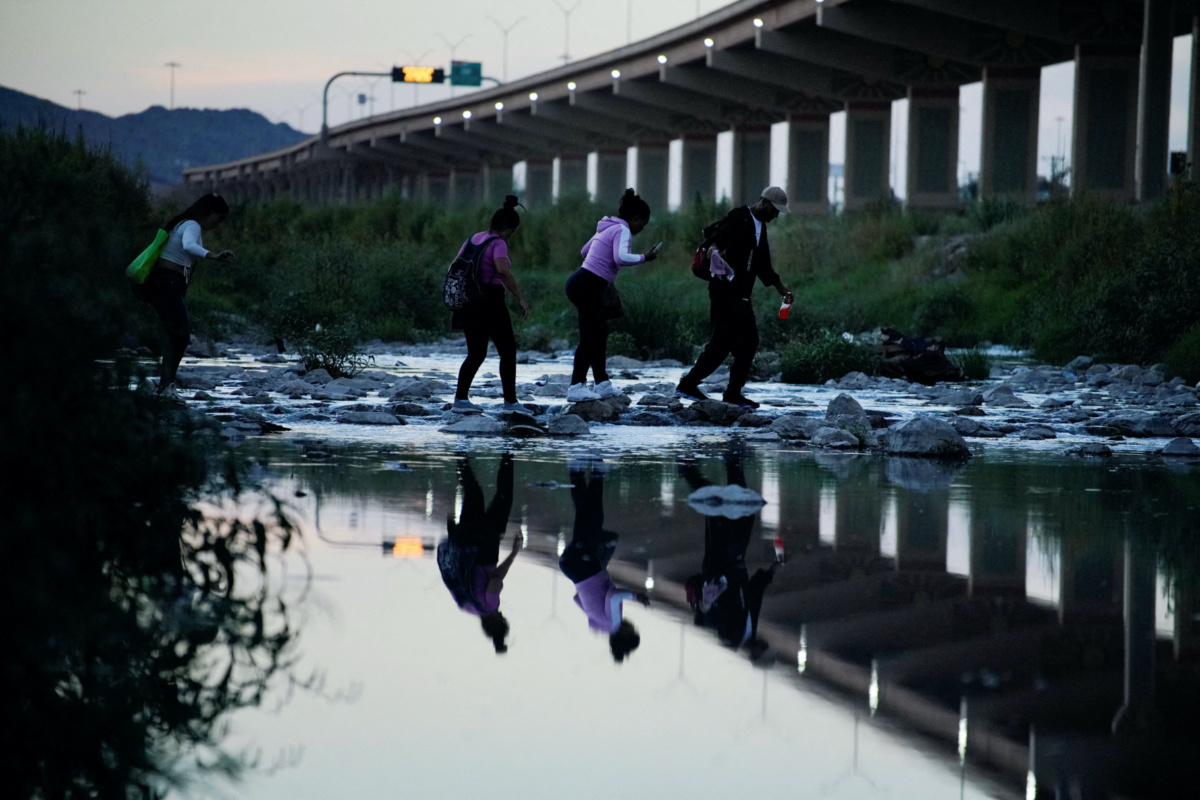
Asylum-seeking migrants cross the Rio Grande to El Paso, Texas, US, as seen from Ciudad Juarez, Mexico, on 3rd October. PICTURE: Reuters/Paul Ratje/File photo.
How did faith-based agencies get involved with this work?
Six of the nine refugee resettlement agencies that work with the US Government are faith-based. They include Church World Service, Episcopal Migration Ministries, HIAS, Lutheran Immigration and Refugee Service, the US Conference of Catholic Bishops and World Relief.
Each has offices in different parts of the country and draws on different networks to do its work.
“Part of the story is faith-based organizations have been the ones receiving refugees well before we had a Refugee Act of 1980 – even back when there was really basically no federal immigration laws,” Soerens said.
For Christians, he said, that commitment begins with a belief that Jesus Himself was a refugee who fled with his family to Egypt as a young child after King Herod’s order to murder all male children Jesus’ age in Bethlehem.
“It’s part of the experience that, for Christians, our Lord and savior experienced as a human being, and that certainly ought to inform how we respond to those in a similar circumstance today,” he said.
For Jews, recent historical experience as well as experiences over the millennia make clear why welcoming refugees is a moral imperative, Hetfield said.
Commands to “welcome the stranger” and “treat the stranger as ourselves because we were once strangers in Egypt” are repeated 36 times – more than any other commandment – in the Torah, he said.
And the American Jewish community owes its existence to those times the US welcomed refugees, he added.
“At HIAS, we say we used to welcome refugees because they were Jewish. Now we welcome refugees because we are Jewish,” Hetfield said.






